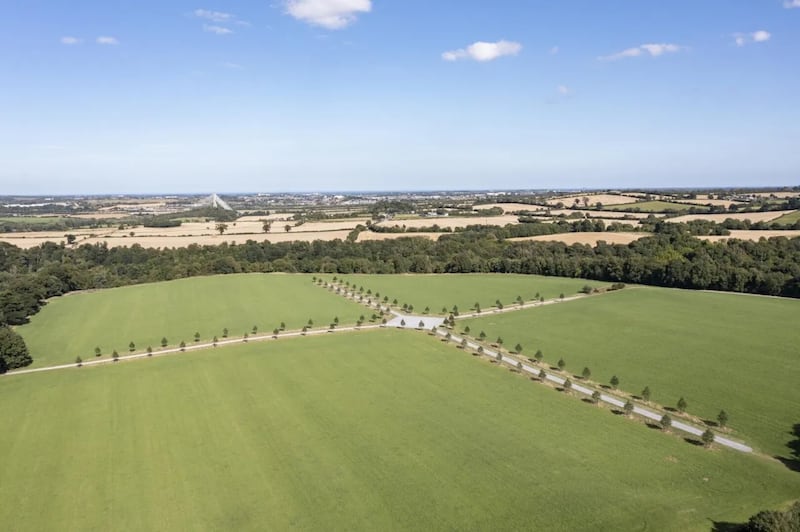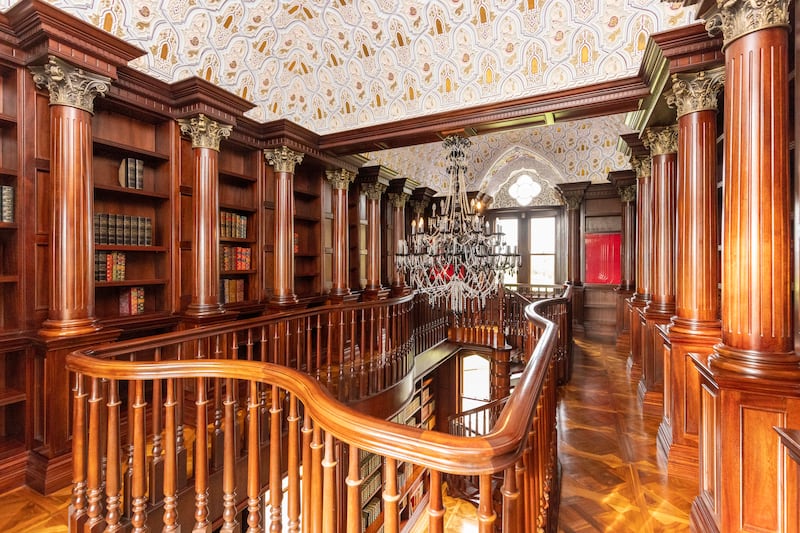Ireland’s newest National Park will be in Co Meath, following the State purchase of a 223 hectare (551 acre) property on the Dowth demesne.
The lands amount to almost one third of the total area of the Unesco World Heritage site in the Boyne Valley and include a Neolithic passage tomb, which was discovered during excavation works to Dowth Hall in 2017.
Other significant archaeological remains on the property include the late Neolithic Dowth henge, two smaller passage tombs, early medieval ring forts and a Bronze Age field system.
The purchase was announced on Friday by Minister for Heritage Darragh O’Brien and Minister of State with responsibility for Heritage Malcolm Noonan.
READ MORE
“This new National Park is a special place where history, heritage, nature and culture collide,” said director general of National Parks and Wildlife Service (NPWS), Niall Ó Donnchú.
Up to now, the State only owned 6 per cent of the lands (43 hectares) on which Newgrange, Knowth and Dowth are situated, with only the passage tombs at Newgrange and Knowth accessible via Brú na Bóinne visitor centre.
The NPWS, the National Monuments Service and the Office of Public Works are now set to work on a master plan for the entire property, which also includes mixed woodlands, wetlands and a demonstration farm extensively researched for sustainable agricultural practices.
“Rarely does the State get the opportunity to acquire lands of such significance. Here is this one place we have over 5,000 years of recorded history,” Mr O’Brien said.
The entire demesne, which was owned by the agritech and animal food company Devenish Nutrition since 2013, is believed to have been sold to the State for €11 million. It includes Dowth Hall, an 18th century neoclassical country house; a refurbished late Victorian almshouse; and extensive woodlands.
“This intact 18th century demesne layered over a monumental prehistoric landscape of global importance and combined with the outstanding natural heritage of the Boyne Valley represents an outstanding addition to Ireland’s family of National Parks,” said Mr Noonan.
The property, which will become the state’s seventh National Park, is about 50 kilometres from Dublin off the M1 motorway. “It’s the first new park in 25 years and only the second one on the east side of the country,” he added.



Owen Brennan, executive chairman of Devenish Nutrition, said: “We are very pleased to welcome what is a new and exciting chapter for Dowth and the Boyne Valley. We wish to acknowledge the scale of opportunity created by the vision of a World Heritage National Park here in Brú na Bóinne.”
While currently in poor repair, Dowth Hall has many original features including rococo stuccowork plaster, marble fireplaces, wooden panelling and large gilded mirrors.
The property was originally owned by the Anglo-Norman Netterville family, who first lived in the medieval tower house which has been altered over the centuries.
The Netterville family built Dowth Hall in 1765. In 1877, the 6th Viscount, John Netterville, built the Victorian almshouse, Netterville Institute. This property – also known as Netterville Manor – was subsumed into the demesne when purchased by Devenish in 2018. It has been used as a research facility and conference space.
[ Knowth visitor centre offers rich megalithic experienceOpens in new window ]
Mr Noonan told The Irish Times that he would like to see the research into intensive farming continued under state ownership.
“We’d like to see the work of Devenish into low fertiliser inputs on multispecies swards on this demonstration farm continue,” he said. The demesne offers lots of other possibilities for education and recreation into its built and natural heritage.
Dowth demesne borders the northern banks of the Boyne river, a designated Special Area of Conservation under the Habitats Directive and a Special Protection Area under the Bird Directive.
A recent biodiversity survey reported 54 species of birds, five of which are of high conservation concern, including a breeding population of native grey partridge.
Eleven species of butterflies and eight species of bats were also identified alongside a significant population of red deer. Woodpeckers, kingfishers, barn owls and hobbies have also been seen on the land.
The newly acquired state property is not directly connected to the Brú na Bóinne visitor site. There are some suggestions, however, that the as yet undecided route of the Boyne Valley Greenway could run through the property now that it is in State hands.
On a tour of the property on Thursday, The Irish Times met archaeologist Clíodhna Ní Lionáin and farm ecology manager, David Dillon, both employees of Devenish.
“The owners were conscious that they bought an estate on a world heritage site and assessed the archaeology with several digs from 2015 to 2019. While they held open days and family days, the State purchase will now make it more accessible to the public,” said Ní Lionáin.
Dillon said that he would like to see “the pride and passion” of the staff and owners continued. “The woodlands and wetlands haven’t been disturbed in centuries so there is an abundance of flora and fauna because there was no human access to it. It has an unique appeal,” he added.












